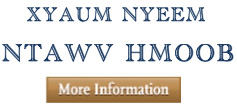History in China
IN THIS SECTION
Diaspora and the Predicament of Origins: Interrogating Hmong Postcolonial History and Identity
By Gary Yia Lee, Ph D. Scholar-in-Residence, Center for Hmong Studies Concordia University, St. Paul, Minnesota, USA.
Hmong Studies Journal, Volume 8, 25 pages
Abstract
This paper examines two basic issues that have been of major concern to the Hmong in the diaspora: (1). What is their historical and geographic origin; and (2) are the Hmong part of the Miao nationality in China, and should they accept being known under this generic name? There have been many theories about where the Hmong originally came from, ranging from Mesopotamia in the Middle East during Biblical times, the North Pole, Siberia, to Mongolia and China. This paper consolidates these many propositions with their supporting evidence, and draws its own surprising conclusion as to the real location of the original homeland of the Hmong. Depending on what they regard as their origin and which history they wish to be aligned with, the Hmong may have to reconsider being known as Miao or Meo, a name which most have vehemently rejected because of its derogatory connotation, especially among the more politically conscious Hmong now living in Western countries.
Introduction:
This paper deals with the search by the Hmong for their history and national identity after being subject to Chinese control for many centuries in China, followed for those who later migrated to Indochina by a further 80 years under Western colonial and neo-colonial domination. The post- independence world has given many enlightened Hmong in Western countries the opportunities to know more about themselves from frequent contacts with co-ethnics in other places during the last 30 years through cross-border visits or by telephone and on the Internet. In the process, they have been confronted with uncertainties and many unresolved questions about their historical roots and how to fill the black holes in their history, a history usually written by others and from the perspective of outsiders. For example, the simple search for the home of their ancestors before the latter’s migration to Southern China where most of the Hmong still are today, is often met with contradictory explanations as they learn more about their past.
The problem lies in the fact that this search for ancestral origins inevitably touches on the definition of who the Hmong are and how they are related to the other three ethnicities in the larger entity more broadly known as “Miao†with whom they have been classified, a classification originally imposed by the conquering Chinese. Because of this forced affiliation between four different groups, conflicting historical narratives have been presented, with some even borrowed from other sources and people2. Each of these Miao groups has their own history, and their own views about who were their ancestors and where they originated from, but these varied versions have now been combined to read like a single unified account (Vwj Zoov Tsheej, 2004). To further complicate matters, these groups speak different languages and cannot communicate with each other. Although they have their own local ethno-names, they like being known nationally as Miao and do not find this appellation derogatory, unlike the Hmong outside China who strongly resent it, and who steadfastly resist its application to them.
With such major differences, what do the Hmong and Miao have in common? Did they have the same cultural and geographic origin? Were they historically different or the same people who now call themselves by different names like Hmong, Qho Xiong, Hmu and A Hmao? If they share the same history, what roles did each of the groups play? Can this origin and related historical events be disentangled for identification, or should they be left as revisited-revised proceedings purposefully joined together into a glorious acceptable narrative to be appreciated, but not to be questioned too much as to which groups its many elements really belong to? These questions have caused much self-reflection among the Hmong in the diaspora today after their post-1975 scattering around the world from Laos and the postcolonial desire for a written history of their own that will pull together the disconnected parts in their collective memories.
While not claiming to make a definitive statement here, I will examine these issues from an “emic†(insider) perspective, from the view point of a Hmong and a researcher, using “etic†(outsider) discourses provided by non-Hmong writers. In addition, I will adopt a “critical theory†stance in that I see historical analysis as grounded not primarily in the search for truth and universal values, but more in the need to problematize the present for its political relevance and utility for social action (Dean, 1994). It is hoped that these two approaches will help bring together the major issues and theories involved, and will add a new position to the discussion of this most controversial subject and attempts at Miao/Hmong historical recovery.
READ THE FULL ARTICLE FROM HMONG STUDIES JOURNAL








